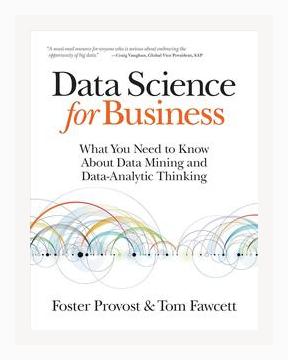Technology and Digital TransformationData Analytics
Introduction to Data Science
Key Points:
1. Definition and Scope of Data Science:
– Data Science combines statistics, data analysis, and machine learning to understand and interpret complex data.
– It goes beyond data collection to include data cleaning, preparation, and presentation.
Actionable Step:
– Start with Clean Data: Ensure data quality by performing data cleaning. Remove duplicates, correct inconsistencies, and handle missing data before analysis.
Business Problems and Data Science Solutions
Key Points:
1. Framing the Problem:
– Transform business problems into data science problems. For example, converting a question like “How can we improve customer retention?” to “Can we predict which customers are likely to churn?”
– Use CRISP-DM methodology: Business Understanding, Data Understanding, Data Preparation, Modeling, Evaluation, and Deployment.
Actionable Step:
– Develop Clear Questions: Work with stakeholders to translate business challenges into specific, manageable data science problems.
- Predictive Modeling:
- Predictive modeling involves using historical data to predict future outcomes. Algorithms like regression, decision trees, and ensemble methods are commonly used.
- Case Study: A retail company using past purchase data to predict customer buying behaviors and segmenting customers based on their buying tendencies.
Actionable Step:
– Deploy Simple Predictive Models: Start with basic models (e.g., linear regression) and gradually explore more sophisticated ones like random forests as understanding deepens.
Understanding and Preparing the Data
Key Points:
1. Data Collection and Integration:
– Gather data from various sources and integrate it into a single dataset. This can include CRM systems, transaction records, and web analytics.
– Ensure data consistency and uniformity.
Actionable Step:
– Use ETL Tools: Implement Extract, Transform, Load (ETL) tools to automate data collection and integration processes.
- Data Exploration and Visualization:
- Use exploratory data analysis (EDA) techniques to understand data trends, patterns, and anomalies.
- Visualization tools like matplotlib, ggplot2, or Tableau can offer insights through graphs and charts.
Actionable Step:
– Regular EDA Sessions: Schedule regular data exploration sessions with visualization tools to derive actionable insights and validate hypotheses.
Modeling and Algorithms
Key Points:
1. Understanding Key Algorithms:
– Different algorithms suit different types of problems. For classification tasks, consider decision trees, logistic regression, or neural networks. For clustering, use k-means or hierarchical clustering.
– Example: Spam email detection using logistic regression to classify emails as spam or not spam based on features like email content and sender information.
Actionable Step:
– Educate on Algorithm Application: Invest time in learning when and how to apply different algorithms. Use platforms like Coursera or Udacity for structured learning.
- Model Evaluation and Validation:
- Evaluate models based on accuracy, precision, recall, and F1 score. Use cross-validation techniques to ensure model robustness.
- Example: When building a fraudulent transaction detection system, measuring precision (to minimize false positives) and recall (to minimize false negatives) is crucial.
Actionable Step:
– Use Metrics for Decision Making: Select evaluation metrics that align with your business objectives and continually assess model performance.
Deployment and Monitoring
Key Points:
1. Deploying the Model:
– Once a model is validated, it must be deployed into a production environment where it can be used to make decisions.
– Example: An online retailer deploying a recommendation system to display personalized product suggestions to users.
Actionable Step:
– Automate Deployment: Use tools like Docker and Jenkins for automating the deployment process of machine learning models.
- Monitoring and Maintenance:
- Models can degrade over time due to changing data patterns. Continuous monitoring is essential to maintain model accuracy.
- Case Study: A predictive maintenance model for machinery that requires periodic retraining based on new data.
Actionable Step:
– Set Up Monitoring Frameworks: Implement continuous monitoring frameworks to track model performance and retrain models as necessary.
Ethics and Privacy
Key Points:
1. Data Privacy Concerns:
– Ensure compliance with data protection regulations like GDPR or CCPA.
– Example: An organization using anonymization techniques to protect user identities in sensitive datasets.
Actionable Step:
– Implement Privacy Preserving Techniques: Regularly audit data practices for compliance and incorporate privacy-preserving algorithms.
- Ethical Considerations:
- Be aware of biases in data and models. Aim for fairness and transparency in data science practices.
- Case Study: A financial institution analyzing how loan approval algorithms might be biased against certain demographic groups and adjusting the model to mitigate bias.
Actionable Step:
– Conduct Bias Audits: Periodically review models for unintended biases and take corrective actions to ensure fairness.
Conclusion and Strategic Insights
Key Points:
1. Strategic Importance of Data Science:
– Data Science helps organizations gain a competitive edge by leveraging data to make informed decisions and create value.
– Example: A company like Netflix effectively using data for content recommendations, influencing subscriber engagement and retention rates.
Actionable Step:
– Integrate Data Science in Strategy: Ensure data science initiatives align with overall business strategy and objectives. Form cross-functional teams to bridge the gap between data science and business units.
- Future Trends:
- Stay updated with emerging trends such as real-time data processing, deep learning, and AI-driven automation.
- Case Study: A logistics company using real-time data and predictive analytics to optimize delivery routes and reduce fuel consumption.
Actionable Step:
– Invest in Continuous Learning: Encourage continuous professional development through courses, conferences, and publications to stay at the forefront of data science advancements.
Summary
“Data Science for Business” by Foster Provost and Tom Fawcett is a comprehensive guide that bridges the gap between data science and business applications. It offers practical advice on framing business problems as data science problems, understanding data, choosing and evaluating models, deploying solutions, and ethical considerations. Through actionable steps and concrete examples, the book equips readers with the knowledge to leverage data science for business success. By adopting these practices, organizations can make data-driven decisions that propel them towards achieving their strategic goals.
